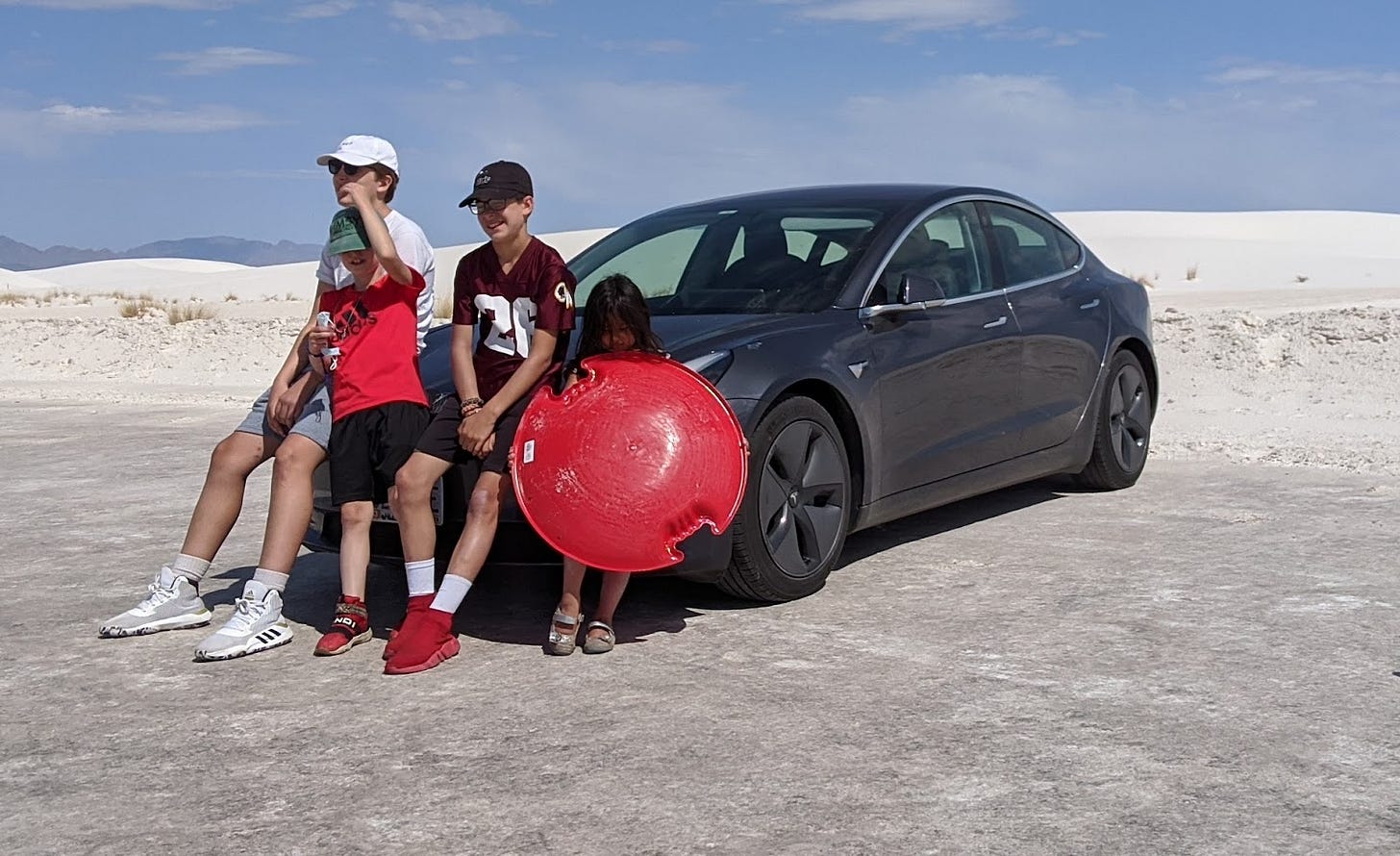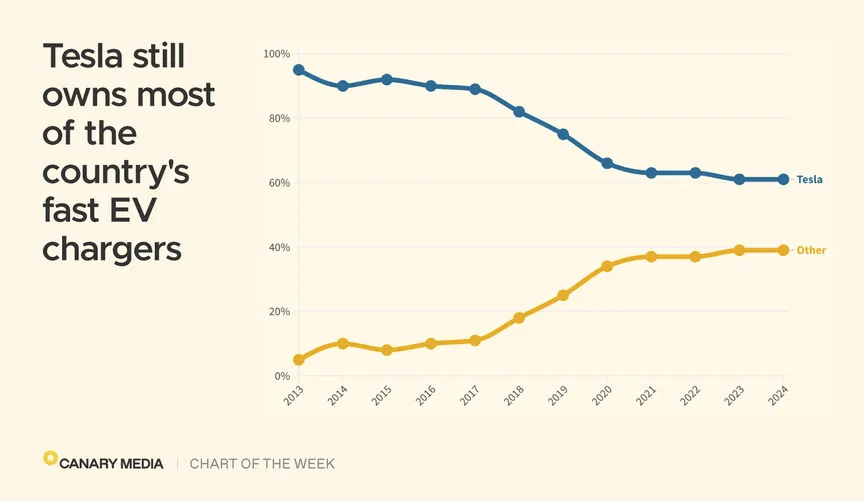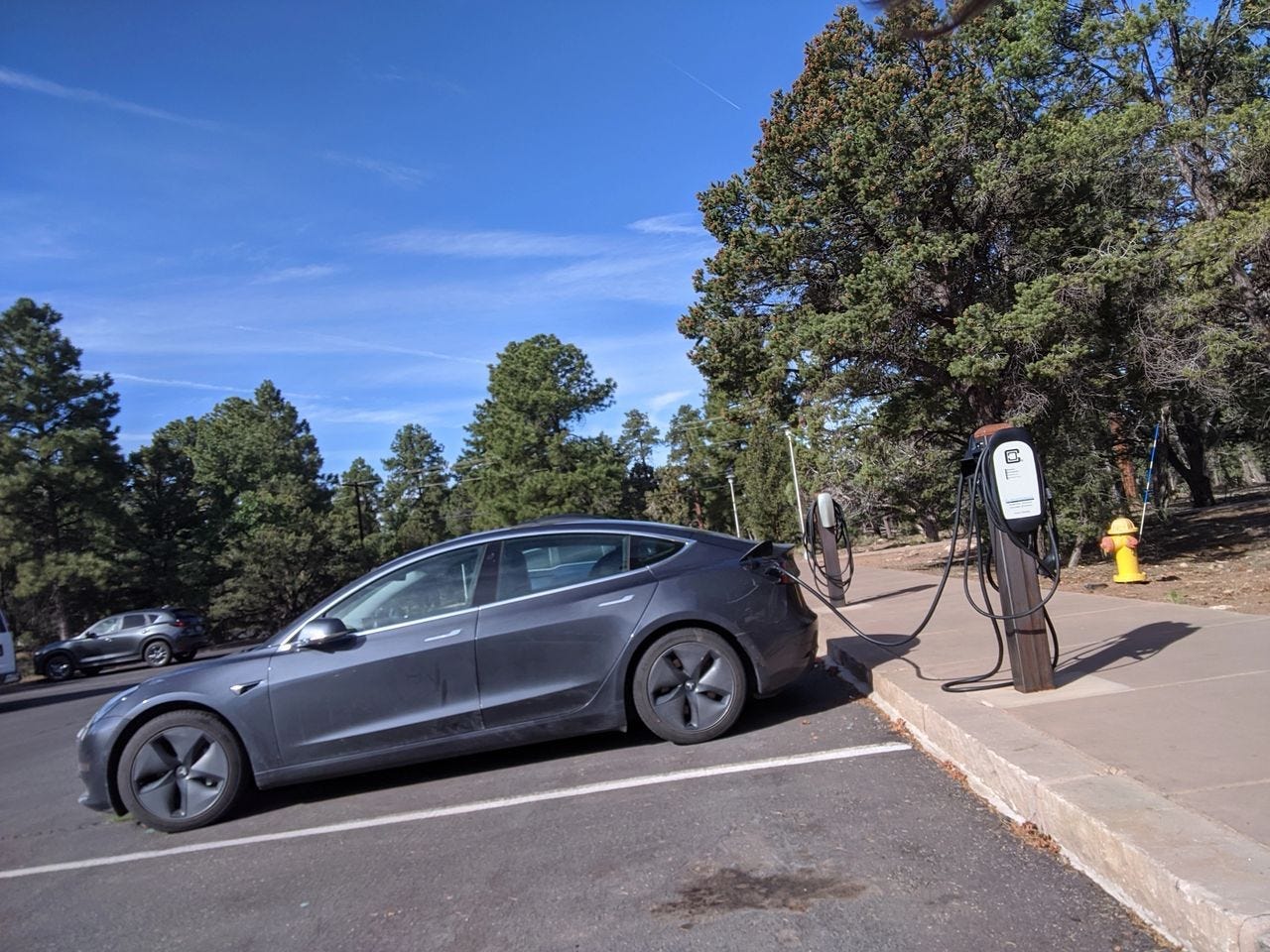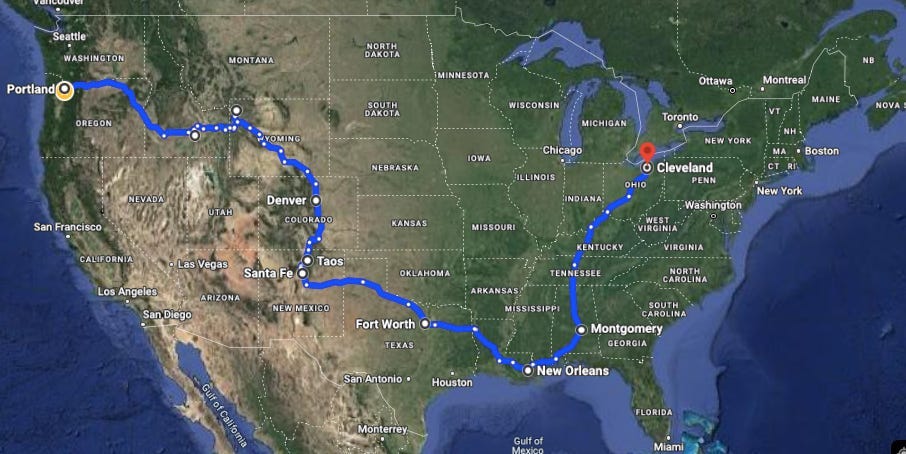EV Road Trips Are Possible Today!
We’re driving cross country this summer to prove it.
When we bought our first EV in 2017 (a Nissan Leaf with 80 miles of range), driving 90 miles from our house in Portland to the Pacific Ocean was a challenge. The only fast charger on the route was 70 miles from home, so we experienced serious “range-anxiety” and had to drive at low speeds to ensure we reached the charger.
Fast forward to 2021. We drove our Tesla 8,000 miles across the country and back in a pandemic inspired road trip to visit family in the midwest. We passed through 19 states, including seven national parks, in a relatively straightforward trip that even had some advantages compared to running on fossil fuels.

What changed in those four years? Fast charging networks and the size of our car’s battery. In the decade since Tesla rolled out its first Supercharger in 2012, an new national network of thousands of fast chargers made coast to coast EV road trips a reality.
This summer, our family of four (plus 13-year-old niece) is embarking on our third cross country, not at all direct, EV road trip from Portland to Ohio via the southern US. As we plan for our adventure, here are some insights we hope will inspire your own successful, pollution-free, summer EV travels.
Charging on the Road
While the number of US Level 3 Fast Chargers (those essential for road trips) has doubled in the last three years, there’s still only 1 fast charger for every 15 gas stations, meaning long distance EV driving still takes some planning. Much of that planning revolves around finding a place to charge overnight to minimize your daytime stops. Most electric cars can plan your route including where to stop and how long to charge. For cars without this feature, there are great apps like Plugshare and Chargeway.
Number of US Public EV Charging Stations which includes Level 2 and Level 3. Source: Alternative Fuels Data Center.
Most long distance charging occurs at Level 3 chargers that are part of national networks like Electrify America or Tesla Superchargers. They put electrons into your vehicle much faster than most home chargers, which are Level 2. There’s no question Tesla currently has the best charging network (though they just laid off all their Supercharging staff so may lose their edge). The number of chargers at each Tesla Supercharger station means you rarely have to wait your turn. The charging process is seamless as the system stores credit card info so all you have to do is plug in. No need to swipe, download an app, or call service, which we did more times than we like to admit with our Leaf. Tesla vehicles also know exactly how much charge will get you to your destination so you won’t charge longer than necessary, and the car even prepares the battery in anticipation of fueling to maximize charging speeds. Tesla owns 60% of US fast charging stations, and fortunately its network will be available to most other vehicles over the course of this year as other manufacturers adopt Tesla’s charging standard and offer adapters to older vehicles.

Compared to Tesla's Supercharger experience, other charging networks can unfortunately still feel like the dark ages. Over three years of fast charging our Leaf, we found that chargers often don’t work or that there are too few at a station, meaning we had to wait our turn. Sometimes we had to download an app to pay. And technical challenges are common. Just recently a friend reported that while enroute from Portland to Seattle, a fast charging cable got stuck to his charging port. After waiting on the phone for an hour, the charging provider told him they could have someone there to help remove the cable in five days! Desperate to continue his trip, and with two young kids in the back, our friend used a pocket knife to pry the malfunctioning latch free from the car. While these experiences are anomalies, they are problematic enough to discourage some EV owners from long distance driving. Thankfully the non-Tesla networks are improving, especially with the significant Federal funding rolling out to expand them.
9 Lessons Learned From Our EV Road Trips
From learning to trust your car (or app) to find chargers and tell you when to charge, to planning bathroom breaks that coincide with charging stops, check out a previous article with nine lessons learned from our EV road trips. The quick list:
There is room for everything (even in smaller EVs, thank you frunk!)
Trust the car to tell you when and where to charge
Charge overnight with Level 2 charging so you wake up with a full battery and save a daytime stop
Fast charging is much cheaper than gas (on one trip we spent just $95 on fuel for a 2700 mile EV trip around the Northeast)
Fast chargers are located in pretty ugly places
300 miles of range is amazing, and with 400-500 the gas car advantage will soon disappear
EV road trips are great for kids
Coordinate all stops (bathroom and food) with charging
Renewables are taking over the country and are a great complement to EVs
Our 2024 Summer Road Trip
We’re hitting the road again this summer with plans to pass through 12 states on our southern route trip from Portland to Ohio. We’ll share some real time updates on the state of the national charging network.
Whether you’re traveling near or far, EV road trips are not only possible but enjoyable, and cost way less than fossil fuels. With improving charging networks and the lessons learned above, we’re confident you’re ready for electrons to power your summer adventures on the open road.








Great post, I completely agree. For us an EV road trip is infinitely preferable to a combustion engine equivalent. Far more interesting and enjoyable in every way. It still amazes me how hard it is for some people to think beyond the gas pump experience they have known all their life, and I say that as someone who is by no means your typical 'early adopter'. I've been having discussions about EV ownership with neighbors on Nextdoor and the conversations have been eye-opening to say the least.
Awesome! But it's still SO much easier in a Tesla than in any other car. Here's what my husband and I encountered on a road trip from Oakland, CA to Albuquerque in our Chevy Bolt: https://flowerchild.substack.com/p/ev-road-trips-doable-but-can-improve